To read other parts:
Part 1 - click here
Part 2 - click here
Prague - April 7 - April 10
The next morning we boarded a bus to Prague. It was another fancy coach bus so we didn't mind it much. Half way to Prague, our driver pulled over into a rest stop. I thought to myself "This is either a passport check or a very bad situation". Turns out it was a passport check.
*Quick backstory: Since the development of the Eurozone, the borders between countries aren't as restrictive as they had once been. The only time I had my passport stamped the entire trip was when I landed in Rome. Travelling by bus or train, most countries usually won't bother checking/stamping passports. Back to the main story.
The Prague police officers came up to Carly and I to check our passports. The check involved flipping through each page to see where we had been. Since I got my new passport (I lost it in Madrid in December) I ordered a 52 page book, since it was free so why not. And that police officer flipped through each and every page. I really didn't mind though because that is his job. He then proceeded to ask me where I had been in Europe. I told him Italy, Austria and Germany. He asked why I didn't have any stamps. I was like:
Are you serious?
Obviously I didn't really say that out loud because I didn't want to be arrested. I told the officer that I didn't have any stamps because no one checked my passport as we traveled because we went by train. He seemed confused that I wouldn't have gone through any kind of customs. I immediately started showing him each of our train tickets and hostel receipts to show him where we had been. The guy was so overwhelmed and probably annoyed that he said it was okay and then left me alone to go to the next passenger. Victory for me! I thought about it a bit longer and realized it was stupid for the police officers to check for stamps when they aren't given on every mode of international transport in the first place.
I really didn't know what to expect when we got to Prague. I hadn't ever seen pictures of the city before so everything was going to be brand new for me. I was NOT disappointed!
These are just some of the examples of the buildings in Prague. The city was not destroyed during WWII, so most of the buildings are original. Prague is an important city in central Europe. It played major roles in the Protestant Reformation and Thirty Years War.
After arriving in our hostel, we looked for things to do at night. Carly suggested we see a puppet show. Puppet shows are a cultural tradition in Prague. We walked to the nearby National Marionette Theater to buy tickets for the Don Giovanni show that night. I'd never seen an actual puppet show before so I was looking forward to the show. The National Marionette Theater was established in 1991.
Entrance to the National Marionette Theater. Don Giovanni has been performed here 4,981 times.
Inside the theater
The show Don Giovanni, based on a Mozart opera, has been performed at the theater ever since the opening. Its performed in the original Italian so Carly and I had no clue what was going on. Based on what we saw, it was a kind of ghost story. Don Giovanni slept around and ruined everyone's relationships and then this big demon statue thing literally drags him to hell. For a quick clip of the show - click here.
The next morning we got ready for our first Sandeman's Tour in Prague. Here's what we saw:
Statue of St. Wenceslas (like from the Christmas song) at the top of Wenceslas Square. St. Wenceslas is the patron saint of Bohemia.
Surrounded by Saints Ludmila, Procopius, Agnes and Adalbert, saints of the Czech area
Czech National Museum behind the statue of St. Wenceslas
Powder Tower, one of the original Prague city gates
Church of Our Lady before Tyn in the Old Town
Prague Astronomical Clock, first in stalled in 1410. It is the 3rd oldest clock in the world and the oldest still working clock in the world.
Estates Theater, annex of the National Theater
Museum of Communism. We didn't get to go inside but this sign is just hilarious!
Our tour guide! And a Cubist building. Prague is one of the only places in the world where there is Cubist architecture.
The building above is also known as the House of the Black Madonna. Before literacy was cool, people identified where they were in the city by monuments on houses. This is a statue of Mary and Jesus painted black so this house became known as the House of the Black Madonna.
The best. bagel. store. in Europe. Hand down no bagel store can beat this place. The bagels were normal sized and they actually had veggie cream cheese!
Spanish Synagogue. Built in the late 1800s in the Moorish Revival style
The Old New Synagogue, the oldest still functioning synagogue in Europe
The Old Jewish Cemetery (you can see the headstones just above the awnings.
The cemetery seems so high off the ground because this was the only place in Prague where Jews were allowed to be buried. As time passed and the cemetery filled up, fresh soil was placed over the graves and the headstones were moved up onto the new soil between where new ones would go. This continued for more than 300 years. There are 12,000 visible tombstones and possible 100,000 burials, the earliest known in 1439. The last person was interred in 1787.
Pinkas Synagogue and Museum
No longer a functioning synagogue, this building is used as a museum to the exterminated Jews of Bohemia and Moravia (area of Czechoslovakia/Czech. Republic.) On the walls are listed about 80,000 names of the Jews in this area who were deported. Three of the grandparents of Former US Secretary of State, Madeleine Albright are listed here. Albright's Bohemian and Jewish heritage was unknown to her until later in her life
Charles Bridge
Our tour ended near the Charles Bridge so we decided to walk across it. Construction on the Charles Bridge began in 1357 and was completed in 1402. It was the only bridge across the Vltava River until 1841 and connected the Prague Castle with the Old Town. Many statues line the bridge. All are copies and the originals are held in the National Museum.
Entrance to the Charles Bridge
Bridge statues
Me on the Charles Bridge with Prague Castle in the background. See the white stuff on my coat? That's snow. It started snowing while we crossed the bridge. Not happy at all.
Entrance on the opposite side of the bridge
Climbing what seemed like an impossibly large hill, we reached Prague Castle. Prague Castle is the largest ancient castle in the world according to the Guinness Book of World Records. The origins of the castle are from the 9th century with the first palace being built on the site in the 12th century. The castle is a huge complex of many buildings.
Entrance
First stop was the St. Vitus Cathedral. The original church was founded by Saint Wenceslas in 925. It is an excellent example of Gothic architecture and is the largest and most important church in the Czech Republic.
Entrance of the cathedral
Original wall paintings
Windows and Gothic arches
Vaulted ceilings
Tomb of John of Nepomuk, a patron saint of the Czech Republic who was drowned in the Vltava river at the behest of Saint Wenceslas.
Tomb again
Above the tomb
organ
view of the altar
The cathedral also had beautiful stained glass windows.
Exterior of the Cathedral
The next morning, Carly and I were off to take another Sandeman's Tour. This tour would be different than anything we had experienced thus far. It's not something most people in America get to experience first hand. I was genuinely curious about this tour from an educator's standpoint and in general.
We were going to take a tour of Terezin (known in German as Teresienstadt), former concentration camp. This concentration camp is different from what you imagine when you think of concentration camps. This makes sense because this camp had an additional purpose besides holding Jews and other undesirable groups captive. In the 18th century, Terezin was constructed as a fortress for the Habsburg empire. During WWI it was used as a political prisoner's camp. Gavrilo Princip and his wife died of tuberculosis in Terezin while under arrest for the assassination of Archduke Ferdinand. After WWI, it was used as a small town.
The Nazis evicted the townspeople so Terezin could be used as a "model town" whose real purpose was a transit camp. The model camp was controlled by the SS but they used a council of Jewish elders to make it seem as though the Jews were in control. The Council had the terrible task of selecting prisoners to be sent to other camps via train as Terezin became crowded. While they did not know it at first, all trains that left Terezin headed for Auschwitz where all prisoners were murdered in the gas chambers.
Instead of barracks, prisoners lived in house/dormitory style buildings. These offered the bare minimum in terms of shelter and personal space for prisoners. Lice and skin diseases were rampant. Terezin was advertised as a sanctuary for Jews from the Nazis and some Jews across Europe paid admission to Terezin, not knowing its true purpose. The Red Cross visited Terezin during the war to investigate allegations of abuse and poor conditions. The entire camp was transformed into a real town in a matter of weeks before the Red Cross arrived. Prisoners were even given fake money to use in the cafe so it would seem like business as usual. The Red Cross visit was planned down to the second with where officers would go, who the Red Cross would speak to and what would be discussed. The Red Cross left Terezin satisfied that the camp held up to its standards.
Terezin was also home to many children. 15,000 in total came to Terezin with only about 1,000 survivors. Organized by prisoner Friedl Dicker-Brandeis, art and writing lessons were available, in secret, for children in the camp. Thousands of drawings and poems from children at the camp were saved by Friedl when she volunteered to be on a transport to Auschwitz, as her husband had been deported the day before. She hid the art in suitcases and gave them to another prisoner to look after. Friedl was murdered at Auschwitz in 1944. Her husband had survived.
In total, 144,000 prisoners were sent to Terezin. There were only 17,247 survivors. Because of intense overcrowding, starvation and disease, about 33,000 died in the camp. A crematorium was built to cremate the dying, as numbers became overwhelming for the mortuary.
Train station nearest to Terezin today. In order to hide the atrocity from local people, the Nazis had prisoners build a connecting train line that led directly into Terezin so locals couldn't see prisoners walking in, but never leaving.
Original train track built by prisoners
The train track is not complete today, as it has been paved over and removed in places but some areas still remain.
Mass grave sites and and memorial
Small gravestones in the distance are single-person graves. When more people started dying from the terrible conditions in the camp, they were cremated and eventually put into mass graves. Cremation is offensive to the Jewish faith and having friends and relatives cremated was an additional pain for the prisoners.
Crematorium in the middle of the cemetery.
Interior of the crematorium (Photo courtesy of Wikipedia). Men from Terezin were chosen to work in the crematorium. Workers had an average life expectancy of 5-6 months before mental anguish broke the men down and they were sent to Auschwitz.
This was the first time I had visited a concentration camp. Walking through the crematorium, especially around the 4 furnaces, I was overcome with feelings of true disgust and also nausea. It was a profound experience for me.
Former garden where prisoners were forced to grow crops, many of which they never ate.
Entrance to the Columbarium. This is where the ashes of Jews were stored until the decision was made to get rid of the evidence that anyone had died there. Prisoners had to move the boxed ashes by hand into the mass graves mentioned previously.
Soil from the grounds of the 5 extermination camps in Poland
Entrance to the Moratorium where bodies were prepared for burial or cremation
Bodies were wheeled down this pathway...
...carried by this carriage, often pulled by prisoners.
Autopsy tables
Coffins used. To save money on wood, many coffins sides and tops were reused so Jews would only be buried on top of the bottom planks.
Terezin today. Surprisingly, about 1,000 people live in the fortress today.
If the pictures seem kind of creepy, thats because they are. Even though Terezin is a town, there were no people walking around. It wasn't even a weekend and the place was eerily quiet.
Ending on a happier note, this is a statue of Sir Nicholas Winton. He helped organize the transport of almost 669 mostly Jewish Czech children from Prague in the early days of WWII and made sure they all had homes when they arrived in England. The statue is on the platform from where the trains to London left. He is responsible for saving the lives of so many children and their children and so forth. He kept his exploits secret until his wife discovered a dossier in their attic with names and addresses of all the children
Winton was reunited with some of the men and women he helped save on a British TV show in 1988. The clip is only 1:39 long and it is truly moving. If you don't cry after watching it, you have no soul. Watch the video here. Winton is still alive and kicking at the ripe old age of 103 (as of 6/10/12).
The next morning we packed our bags and were off to our final destination, Berlin!
All pictures from Prague - click here
Berlin - April 10 - April 13
As always, we started out with a Sandeman's New Europe Free Tour of the city. The name for the city of Berlin may come from an old Slavic word meaning "swamp". Because Berlin was literally a swamp when it was settled in the 13th century. The first mention of the name Berlin was in 1244. Berlin is different from most cities in Europe because it was not conquered by the Roman empire.
Brandenberg Gate, most famous symbol of the city, built in the 1730's
The Brandenberg Gate is a former gate of the city of Berlin and is the entrance to the Pariser Platz. It used to be part of the Berlin Wall. This part of the city is where many nations have embassies including the US, UK, and France.
The Quadriga, set of four horses driven by the Roman goddess of Victory.
Hotel Adlon
Hotel Adlon is located in Pariser Platz. Many famous German politicians, foreign dignitaries and celebrities stay here if they are staying in Berlin. It's also the place where Michael Jackson hung his baby out a window in 2002. So that's pretty cool.
Dark bricks mark where the Berlin Wall used to fall
Monument to the Murdered Jews of Europe
This is an interesting monument in Berlin. it is set on about 1/4 of a city block and is made up of stone slabs of various heights. The slabs on the edges begin at ground level and then rise up, row by row, to reach a maximum height of almost 16 feet high towards the center. The purpose of the monument is to make visitors ask questions about the monument: why is it there? what does it represent? because there are no signs or indications as to what this monument actually is. When walking through, the sounds of the city drown out and it can become quite a confusing place. The sun can even be blocked by the large blocks of stone, making it slightly darker. This monument has been the source of much controversy. The massive nature of the monument and the impersonal nature of the stone blocks are points of contention, along with the fact that it cost 25 million Euros to complete. Jewish organizations in Berlin have expressed dislike for the monument, with one calling it "unnecessary".
Just past the monument is a seemingly inconspicuous parking lot. Beneath this parking lot is the bunker in which Hitler committed suicide. It is inaccessible as it was filled in with cement and rocks and metal scraps to prevent it from becoming a neo-Nazi shrine.
Pink pipes run around Berlin. Since it was a swamp, the land has a very high water table so water pipes have to be above ground.
Federal Ministry of Finance Building, former Reich Treasury and headquarters of the Luftwaffe during WWII
Preserved on the side of the building is a mural depicting the "harmonious life" of socialists in East Berlin. A more complete view of the mural can be seen here.
Displayed in front of the mural is a picture of the East German uprising of 1953, shortly before the police suppressed the protest.
A large piece of the Berlin Wall
Famous Berlin tourist trap, Checkpoint Charlie. Named after the phonetic alphabet word for Checkpoint C (Checkpoint A would be Checkpoint Alpha; Checkpoint B would be Checkpoint Bravo etc), this is NOT the original Checkpoint Charlie from the Cold War days. It was reconstructed as a tourist trap. The soldiers present are actors and you have to pay money to take pictures with them so don't be fooled! By the way, the picture of the American soldier has nothing to do with the Checkpoint, other than the fact that he's on a giant sign near it. This soldier was selected at random to represent the US presence in West Berlin and is facing into East Berlin.
On the other side, is this random guy, representing the Soviet Army, looking out into West Berlin.
Close-up of the checkpoint
Exterior of Humboldt University. The courtyard where we were standing was the location of Hitler's book burnings in the 1930's. About 20,000 books by unfavorable authors were burned.
Beneath the courtyard, is shelving space for 20,000 books; a memorial to the book burnings. Near these windows is a plaque with the quote from an 1820 work by Heinrich Heine which translates to: "That was only a prelude; where they burn books, they ultimately burn people"
Faint lines of the bookshelves can be seen, as the entire room is completely white.
Built so Berlin could have a fancy cathedral like the rest of Europe, it was constructed in the 1750's but in such a way as to make it look like it was built many years earlier.
What the Berlin Wall and "no man's land" looked like
Kids used to play catch with fake grenades
Summer camps involved military training, so every German would always be ready for any emergency
What the inside of a prison may have looked like
Socialism: cooperation of worker and farmer
This museum was very crowded, not very well laid out and smelled strange from all the people so we didn't stay very long.
The next morning we got up and went to the Jewish Museum. This museum documents Jewish culture from it's beginnings to the present and was surprisingly interesting. Pictures were not allowed in most of the museum but you can check out more about it here.
One place you were allowed to take pictures was in the Holocaust Tower which is described best in the picture below (sorry for the shadow on the top line):
Like the quotation says, the space is open to many interpretations
A similar monument to the Holocaust victims is in the museum
Carly and I each hung pomegranate prayer cards on this tree
And I took this badass picture of me with a Kaiser mustache.
Next, we left the museum and went to the Topography of Terror exhibit.
Topography of Terror is a timeline, next to part of the Berlin Wall, that shows the not so nice parts about German History from the Third Reich to reunification with West Berlin.
Our final tour was an Alternative Tour of the city of Berlin. Berlin is known for its anti-mainstream culture, music and artwork so we wanted to experience this with a tour guide who could show us the best examples of this.
In a nutshell, our tour guide was an agitated, slightly dingy hipster/potentially formerly/currently homeless person but he knew so much about different alternative places and art in Berlin I was very impressed.
We saw a lot of amazing murals on the tour and we walked the East Side Gallery. The last place we visited was a squatter's "home" which he was insistent should be preserved. Basically, it was a big concrete warehouse that smelled like urine and dead animals. It was terrible. But all the other cool pictures I took on the tour were worth it:
This artist paints 6s all over Berlin
7up. I honestly forget why this gets painted but it's all over Berlin too
Statement on capitalism (left) and the union between West and East Berlin (right)
statement on global warming
These artists paint fists showing solidarity and "fighting the man". They paint these on many cool places around Berlin...
...like on signs in the middle of a river.
Little Lucy, painted in various states of cat killing
A cat killed by Little Lucy
Rat potentially drawn by Banksy
The world famous East Side Gallery, the longest existing part of the Berlin Wall which has sponsored paintings on it.
We Captured a Crescent! (hopefully soon to be featured in the summer issue of The Crescent!)
And that's it everyone! I hope you enjoyed reading all about my & Carly's European Adventures :)
All pictures of Berlin - click here
To read other parts:
Part 1 - click here
Part 2 - click here
























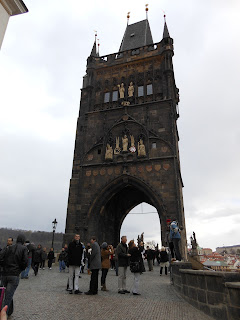



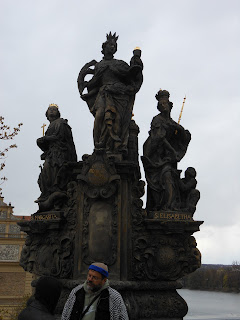





























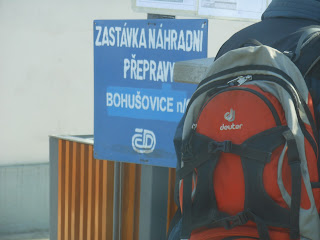
















































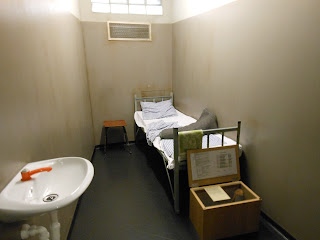





























































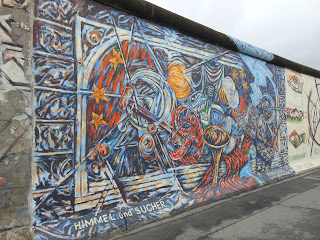

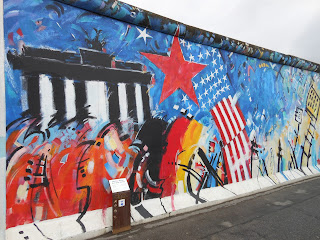






No comments:
Post a Comment